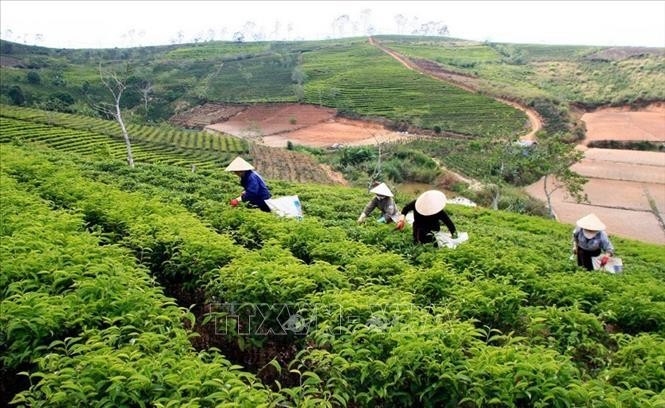The festival features four remarkable records: a mass tea-brewing performance by 1,111 artisans; the preservation of a 100-year-old tea factory; the participation of beauty queens from 80 countries; and the display of 1,000 ancient tea trees, each several centuries old.
    |
 |
|
By 2025, Lam Dong province’s tea cultivation area shrinks to about 12,000 ha of raw material zones. |
The festivities began at the historic 1927 Tea Factory, Vietnam’s oldest tea processing facility, which still operates with its original machinery. The opening day also launched an art, photography, and music workshop themed around the factory’s century-long legacy.
Running from November 11 to December 7, the festival presents a panoramic showcase of global and Vietnamese tea culture. Highlights include the Tea Gallery, an immersive cultural-technology exhibition; Tea Connect, a diplomatic tea exchange attended by 60 ambassadors; the Tea Summit, a high-level forum on the global tea industry; and the Tea Carnival, featuring a grand concert and Ao Dai performance by 80 Miss Cosmo World contestants.
With a vision of connecting cultures through tea, the World Tea Fest seeks to make tea a universal language of peace, cooperation, and sustainable development. Its mission is to create a “Global Tea Bridge,” a platform for cultural exchange, economic collaboration, and the celebration of tea as a shared human heritage.
Complementary events will run until December 4, including Tea Art (art exhibitions inspired by tea), Gen Tea (a student competition on tea culture and entrepreneurship), and Tea Culture, a ceremonial tea offering to the Hung Kings. The Gen Tea contest, in particular, aims to inspire youth innovation and entrepreneurship rooted in Vietnam’s tea traditions.
Expected to attract tea producers from Japan, China, France, Malaysia, and Thailand, the World Tea Fest 2025 not only celebrates Lam Dong’s identity as Vietnam’s tea heartland but also affirms the nation’s growing presence on the world tea map.
Tea first arrived in Lam Dong in 1927, introduced by a Frenchman named Romoeville in Cau Dat, Da Lat. By 2022, the province had become Vietnam’s largest tea-growing region, spanning nearly 26,000 ha and producing over 182,000 tons annually. However, by 2025, the area had halved to around 12,000 ha due to competition from higher-value crops and limited investment in deep processing and product diversification for export.
Source: VNA